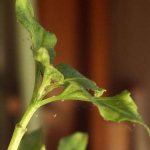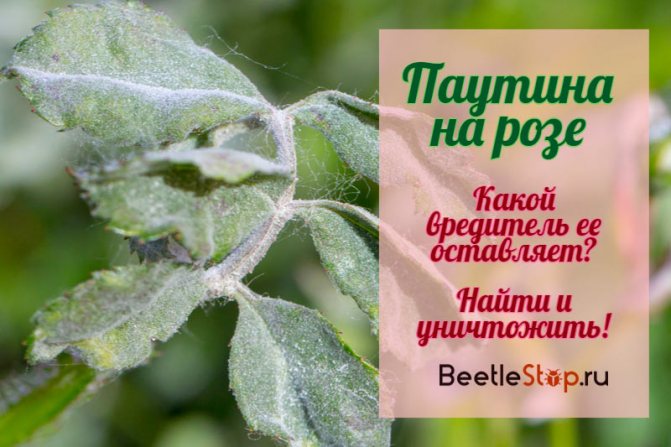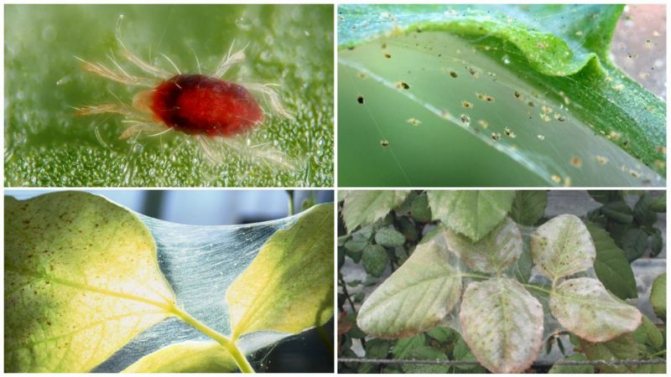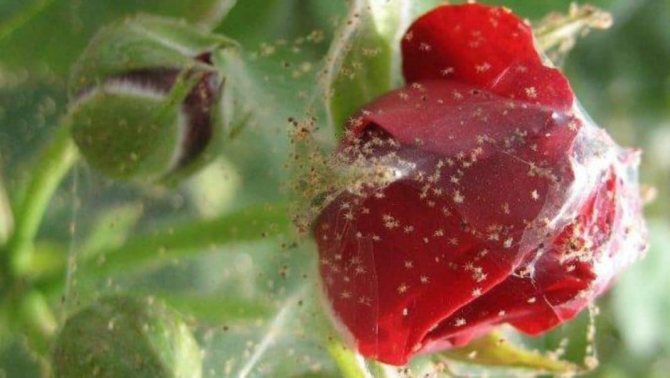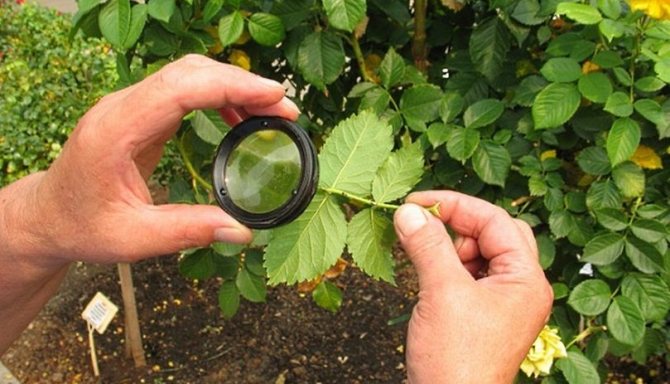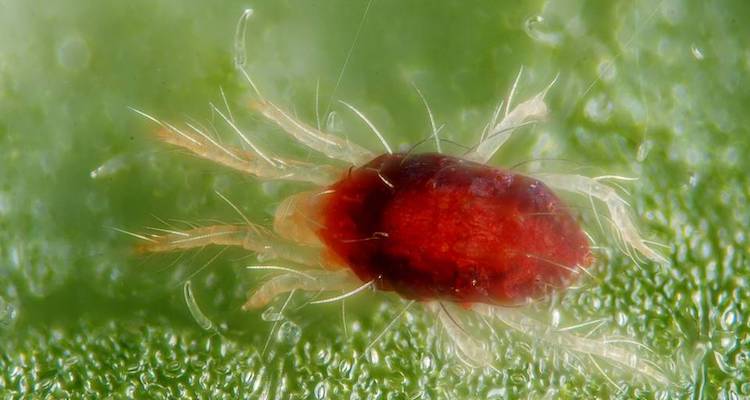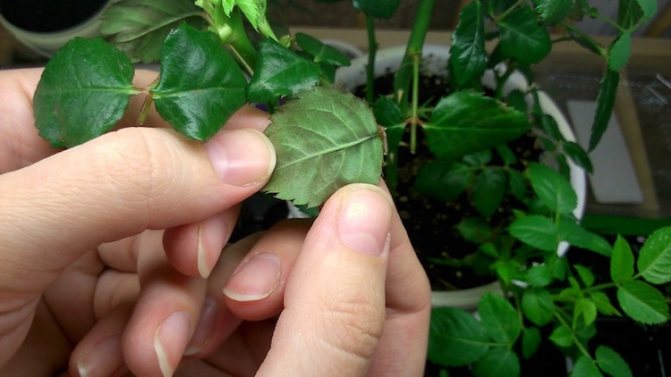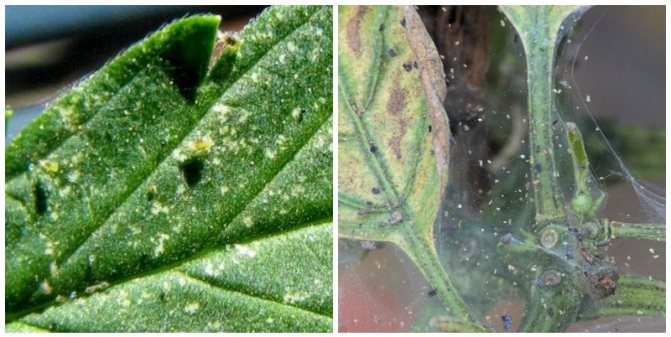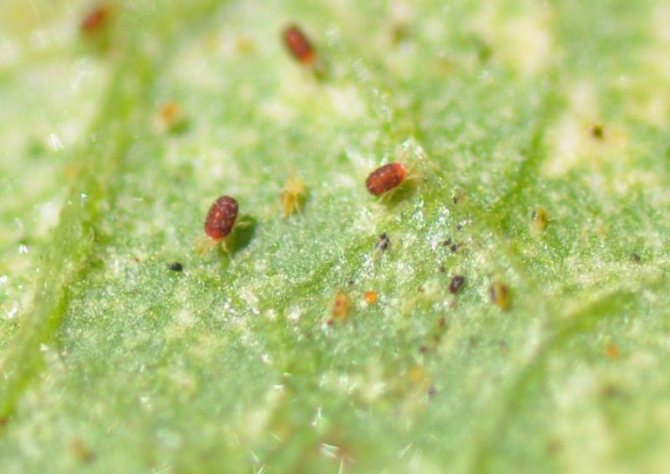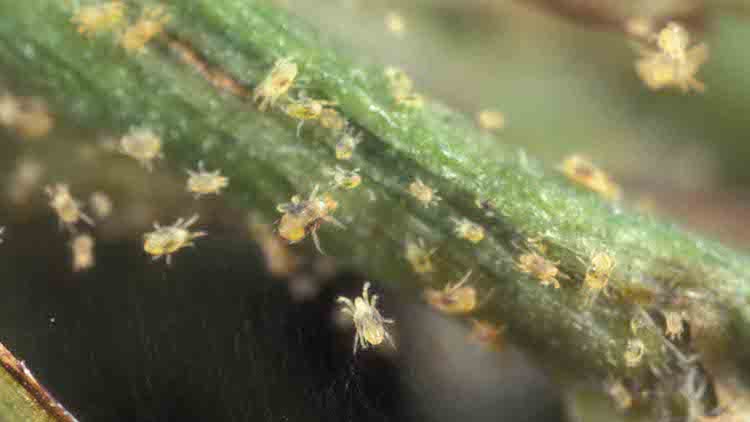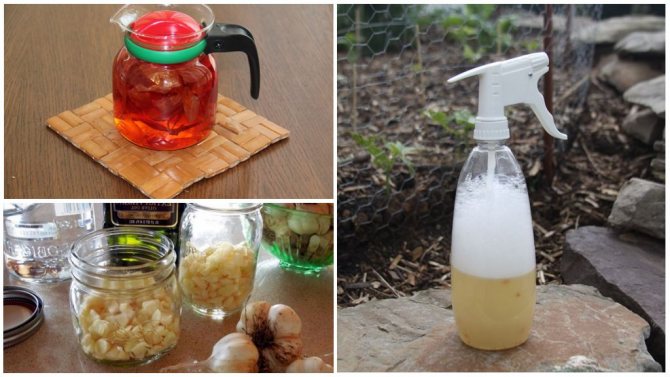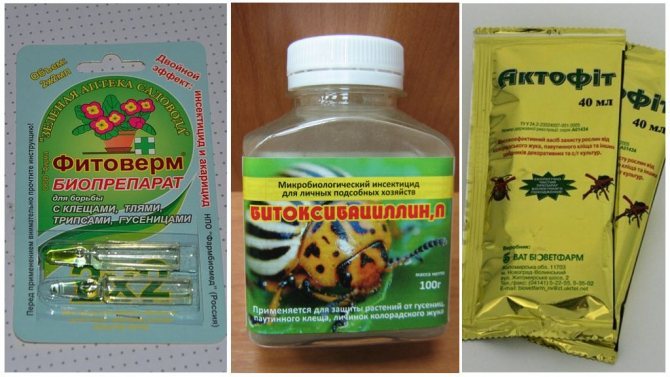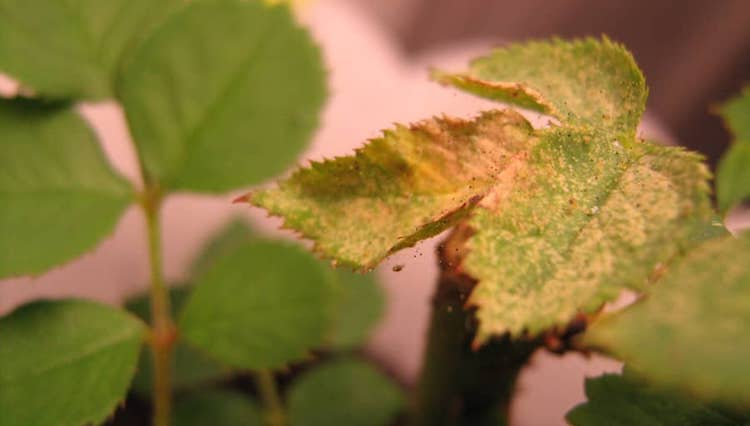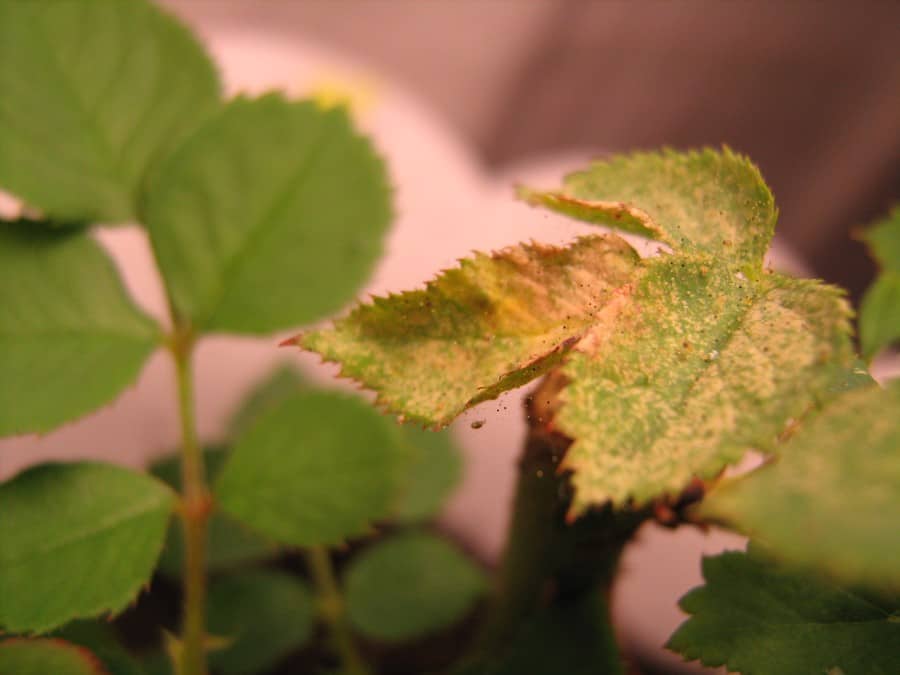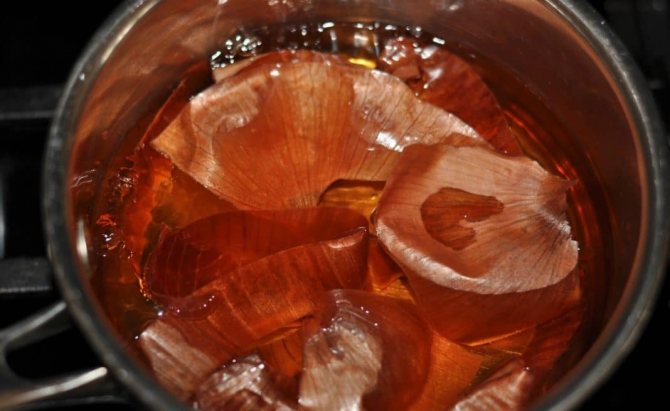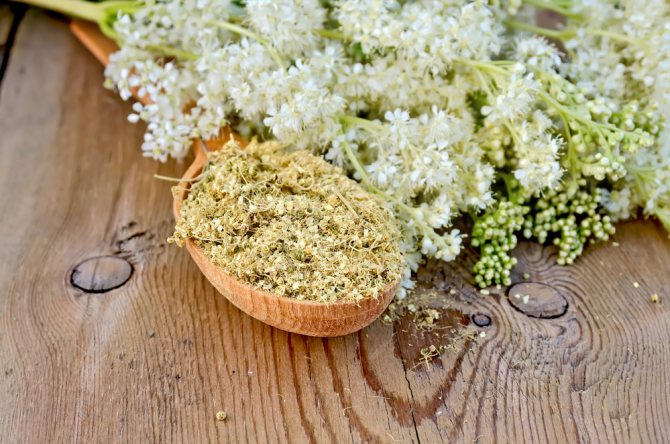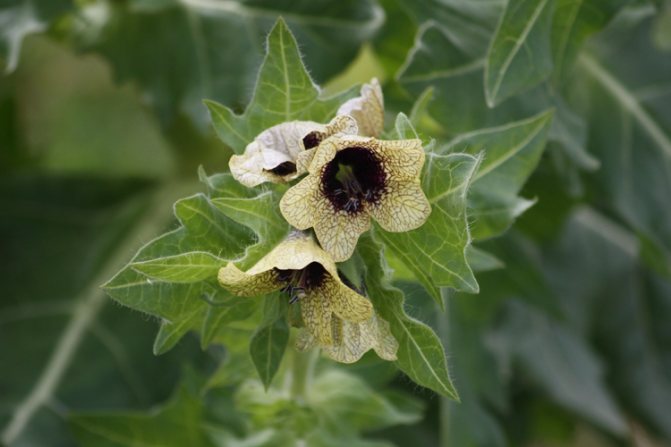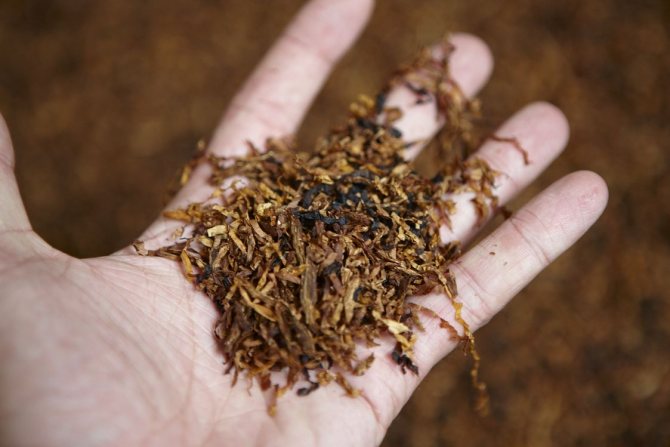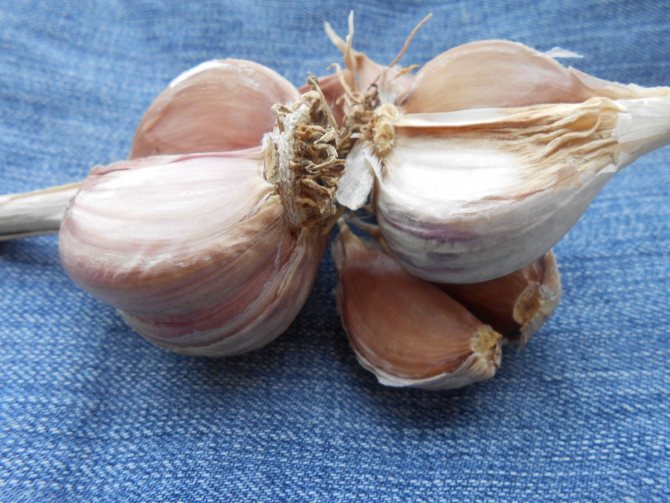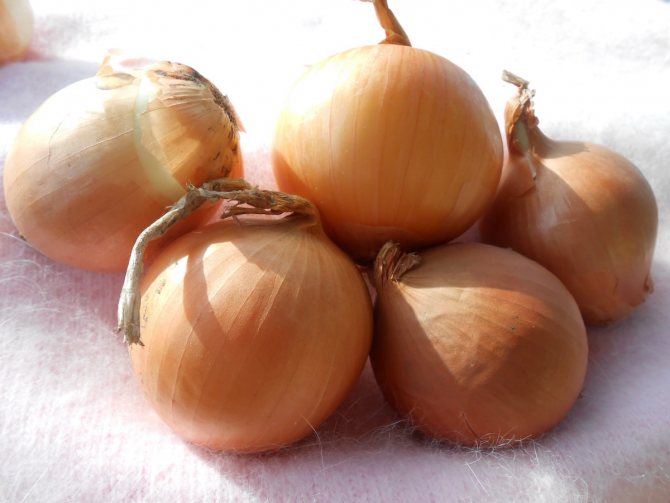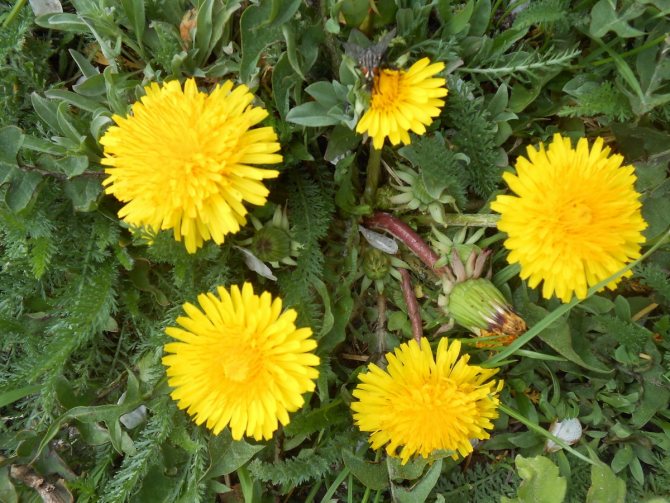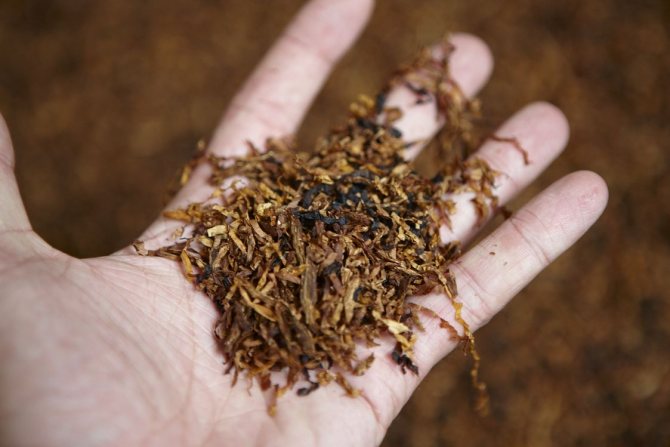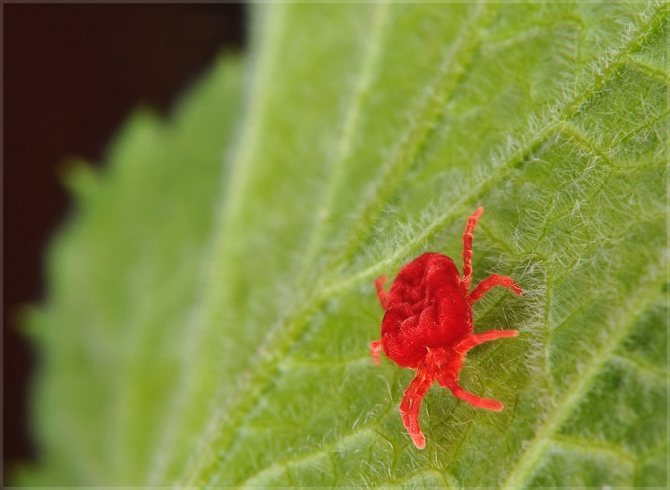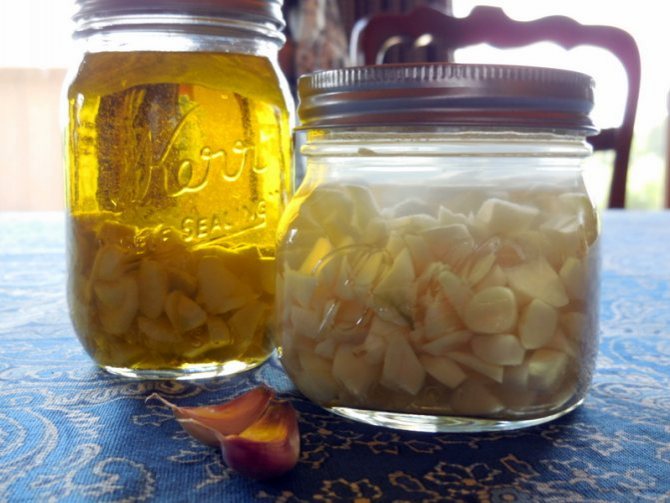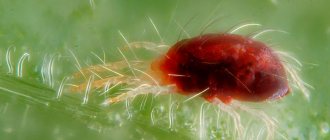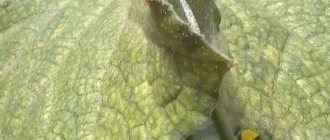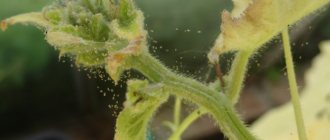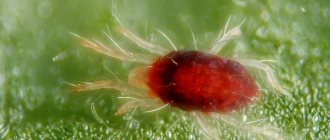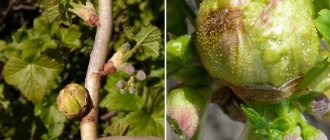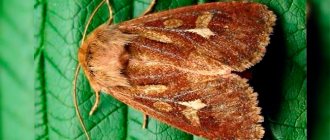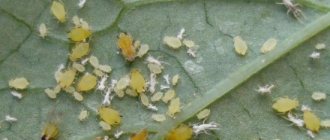Roses can delight with beautiful flowering for many years, but even the plants that receive the most painstaking care are not immune from diseases or pests. One of the most common parasites is the spider mite, which sucks the juices from the flower and kills it mercilessly. How to recognize this parasite, and how to get rid of the problem that has appeared? The rest of the article will talk about exactly this.
What does a pest look like, and should there be a web
The whole point is that the spider mite on roses is almost invisible. It is difficult to see it without proper optical weapons, because you have to deal with an almost microscopic creature, whose dimensions are negligible - only 0.5-1 mm. This tiny spider is often brown or brown in color. So nature has ordered that he lives at the expense of plants, feeds on their cell sap, piercing with his tiny, but relatively strong jaws, leaves filled with vital energy.

Many flower lovers, when faced with this kind of problem, think that if there is no cobweb, then the rose was attacked not by a spider mite, but by some other pest. Yes, if you start from the name of this parasite, then there is certainly logic in such reasoning. But if we proceed from practice, then the cobweb on the roses does not always appear. Some varieties prefer to isolate the secret in the form of threads at once, some do not. When the situation is running, and there are many ticks on the plant, then the cobweb will be mandatory. In critical cases, it literally braids the entire bush.
Prophylaxis
It is easier to prevent the appearance of this sucking pest than to get rid of it for a long time and dreary. If the air in the room is very warm and dry, then the chance of mites appearing on the plants is greatly increased.
But he hates humidity, so it is recommended to spray all the plants in the room regularly. But you should not overdo it with this procedure, as with excessive moisture, rotting can develop.
To prevent the pest from winding up indoors, several preventive measures should be followed:
- During each watering or spraying, visually inspect the greenery for the presence of diseases or insects.
- You can increase the humidity in the room with the help of special humidifiers.
- In summer, it is recommended to spray indoor flowers more often than usual.
- Rinse each flower every two months under a warm shower.
- If suddenly a cobweb is found on the leaves, you should not be scared, suddenly this is the result of an ordinary harmless spider.
- During the fight against a spider pest, plants are not treated with phosphates.
- Before using chemistry, everything is first washed with ordinary soapy water.
- After each treatment, the pot with the plant must be covered with plastic wrap for several hours, which will block insects' access to oxygen. This will accelerate their death.
Where does spider mite come from
The wind blew - the most paradoxical of all is that this answer to the question of where the spider mite on the rose comes from is the most accurate. If a plant lives in a garden, in an open area or on the extreme line of a flower bed, then in dry, windy weather, more than one parasite can easily get on it. This is how nature works. First, a tiny creature falls on a leaf, and then it is no longer difficult for him to settle there and begin his parasitic activity. Keeping track of this is almost impossible, but factors such as birds or rain can prevent spider mites from reaching the rose bushes.
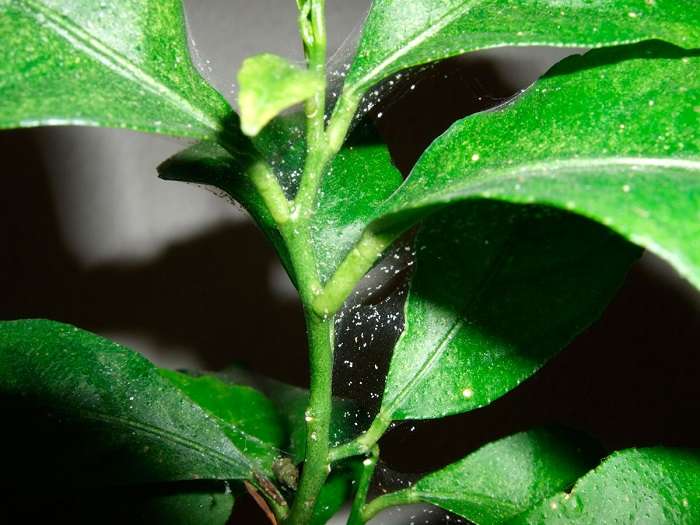

What happens to flowers growing indoors? As a rule, pests are introduced into the house directly on roses or on any other plant. If in a closed room favorable conditions are created for them, that is, dry and warm, then they happily live and reproduce at a fairly fast pace. And this is logical, because spider mites live only about 1.5 months. During this period, the average female contrives to produce several hundred new destroyers of greenery.
What is a tick
The spider mite belongs to the category of arthropods, therefore, strictly speaking, it cannot be classified as an insect. The size of the tick is very small, it is difficult to see it with the naked eye, only when looking closely at the rose bushes can you notice small bugs, the size of a grain of sand. This is a tick. Females are usually larger than males, measuring about 0.4-0.6 mm, while the male body is 0.2-0.4 mm long. Sometimes the size of an adult can reach up to 1 mm, but such mites are rare.
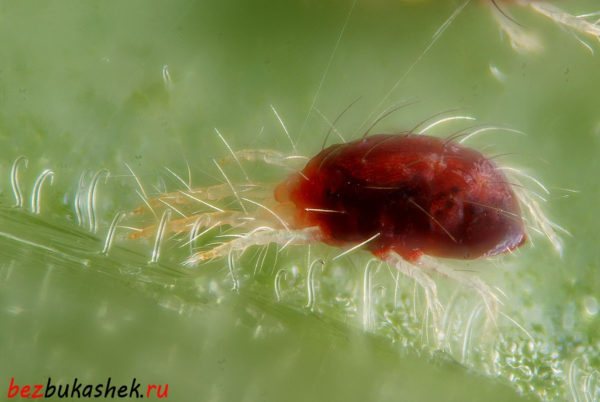

Spider mite
The color of the pest is bright red, less often orange or yellow, which makes it difficult to detect it on the flowers of roses of red and burgundy shades. When the colony becomes too numerous, they become visible on the bush due to their bright color. The mite larvae are light green and are difficult to find on the inside of the leaf.
Spider mites reproduce rather quickly, as if compensating for the fact that not all individuals survive during the winter. The female mite is capable of laying up to 400 eggs in one clutch, over the summer there can be more than 20 such clutches. The larva matures in the egg within 10-14 days, after which the larva is born and enters the nymph stage. After a few molts, the larva turns into an adult. The larvae have three pairs of legs, the nymphs and the adults have 4 pairs each. The life span of the parasite is relatively short - only one and a half to two months, but even for such a period they are capable of causing severe damage to plantings on the site.


Spider mite larvae
The ideal conditions for living and active reproduction of ticks are low humidity (less than 50%) and high temperatures (25-35 degrees), so rainy weather or a sudden cold snap can help in the fight against spider mites.
Insects often hibernate in fallen leaves, cracks in the bark, on weeds, uncleared old bushes, but not all individuals survive. You can also infect healthy plants by planting infected bushes next to them.
Arthropods spread over the site with the help of larger insects, birds, animals, strong wind also contributes to the spread. Spider mites can get on indoor flowers from the street, for example, through a window. Spider mites release cobwebs, with the help of which they also "travel".
How spider mites affect a rose
Minimal accumulations of spider mites are not as dangerous as it might seem at first glance. They are, of course, active, but initially they do not so terrifying damage to the plant. Their activities are divided into the following stages:
- black dots appear on the foliage (in some cases, large spots);
- castings gradually turn yellow, after which they fall off;
- on the remaining shoots and buds, a web forms over time;
- there are so many ticks that whole herds can be seen.


These pests work, as they say, slowly but surely, systematically depleting their prey, stopping the active growth of the bushes. If we are talking about young seedlings or roses that have not yet matured, then without urgent measures to eliminate parasites, they can die, literally never blossoming. A gardener needs to think faster than treating a rose from a spider mite at home, or what other methods to resort to in order to have time to save his brainchild.
A few words about the pest
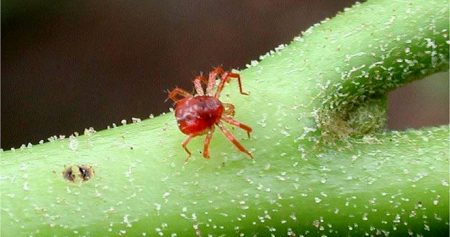

A spider mite is a small oval-shaped arachnid insect, 1 millimeter in size, red in color (the larvae are light green in color). Plant sap is the main food of the pest. The insect is omnivorous, it attacks absolutely all plants that come across on the way. Can be transported long distances using its web. At air temperatures above +23 degrees, the mite multiplies quickly, laying up to several hundred eggs on the leaves. The larvae are especially gluttonous - they drink vegetable juice. In this case, the process of photosynthesis is disrupted, the plant is depleted and dies.
The spider mite most often affects young bushes that do not have strong immunity. On such bushes, when exposed to a pest, buds do not have time to form.
Folk ways to combat spider mites
All known methods are good here, the main thing is that they are effective. Someone prefers to immediately resort to radical measures based on the use of chemicals, while someone relies on folk remedies, trying to win the battle against parasites with little blood. Among the notions of folk craftsmen, the following methods of destroying pests are distinguished:
- medical alcohol;
- soap solution;
- decoction of garlic.


Spider mites really are not lovers of alcohol, under the influence of which they irrevocably surrender. This method is effective, but not completely, since the eggs of parasites, laid under the foliage, still remain invulnerable. And with an excessive amount of medical alcohol on the plant, the green mass may turn yellow, but if the liquid is carefully applied with a cotton swab, it will quickly evaporate and nothing critical will happen.
A cobweb appeared on a room rose - what should I do?
It must be thoroughly bathed, after having painstakingly treated with soap. In the bathroom, you can arrange a whole "foam party", since it is necessary to soap the entire bush, including the pot. Even the ground should be sprayed abundantly, but in no case should it be watered with soapy water, as this will dry out the flower. Another nuance - you should not rush to wash off the soap residues. It is better to play it safe and wait 3-4 hours, or even better - cover the plant with an ordinary plastic bag, which will lead to an increase in local humidity, and the spider mite on the rose simply cannot withstand a double blow.


Many gardeners share their secret of how to deal with pests, if a spider web appears on a room rose, using garlic. The recipe is not too fancy: you only need 2 heads of a vigorous product. They are crushed, poured with a liter of boiling water and left to infuse in a dark place on day 3. The resulting infusion is abundantly processed by the plant. If we imagine that the juice contained in the tissues of a rose is blood, and the mite drinking it, in turn, is a vampire, then like any descendant of Count Dracula, he will certainly die under the influence of garlic.
Folk recipes
They should be used when the infestation is only in its early stages or when the rose is very young.
- Soap solution - Any soap from ordinary liquid to tar is dissolved in a container with water. The main thing is to have as much foam as possible. Then manually rub each leaf, stem with a sponge dipped in soapy water. Only the soil must be covered in advance with plastic wrap. After a few hours, wash off all this solution from the leaves with an ordinary damp sponge and immediately cover the rose with plastic wrap.Leave this way for several hours. Parasites in high humidity conditions should completely die.
- Garlic - 50 grams of grated garlic is diluted in a three-liter jar of boiling water, put in a dark and dry place for five days. Strain and thoroughly spray the entire bush.
- Onion husks - Collect about 100 grams of husks, pour 5 liters of boiling water. Insist in a dark and dry place for about five days. Filter and spray the entire bush. This remedy may not work if the flower is severely damaged.
- Ammonia - A standard 30 gram bottle of ammonia is diluted in a ten-liter bucket. Each area of the damaged plant is treated with a sponge or cotton pad soaked in it. A small amount of this solution can be poured over the soil.
- Tobacco Powder - Dilute 500 grams of tobacco powder in a bucket of liquid. Leave to infuse for a day. After straining every week, they spray all the plants with it until the ticks completely disappear.
- Yarrow - Fill a container with 1 kg of dry leaves of this herb, fill to the top with boiling water. After four days, strain and process the roses every week.
- Dandelion - Before spraying, 40 grams of medicinal dandelion is infused in a two-liter can of warm water for about 6 hours.
Spider mite chemical control
Gardeners who prefer not to hesitate, but to immediately exterminate the enemy, choose chemical preparations, among which are:
- armor-piercing toxic agents;
- biological insectoacaricides;
- acaricides with ovicidal action.
Perhaps for an unprepared reader, these intricate names don't say anything, so it's better to give a specific example. Acaricides have a devastating effect on both ticks and their eggs. For example, Neoron is one of the most popular drugs, only two uses of which are enough to solve the problem, in most cases completely.


Such a toxic substance as Akteplik kills pests on the spot. It is better to use it outdoors or with good ventilation and only in critical situations, when there are a lot of mites, since the substance is really toxic. Fitoverm can be distinguished among insectoacaricides. It is relatively harmless and not much less effective. And all the same, it should be applied taking into account all precautions, and after the procedure for spraying the rose, it is advisable to thoroughly wash your hands and face.
Reasons for infection
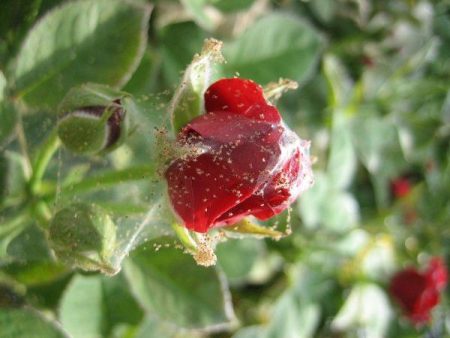

If the tick has already reached your garden, then in a couple of weeks its numerous offspring will "rule" the entire flora growing on the site. He does not bypass either vegetable crops, or fruit trees, or flowers. The pest spreads by air, that is, it is carried by the wind from plant to plant. Pets can also "help" the parasite (bring on wool). Territory capture usually occurs in hot, dry weather when dusty conditions are created. First, the tick hits the plants growing on the outskirts of the site, and then, with each new stream of wind, it moves into the garden.
Most often, those roses that have not received proper care from a person are affected by a tick. Without regular fertilizing, tillage, pruning, plant immunity is weakened - such flowers cannot resist the onslaught of the enemy. The situation is aggravated if the plantings are strongly thickened and shoots grow in them.
Illiterate rose care is the cause of spider mites. With insufficient watering and a thickened planting, roses have little chance of survival.

